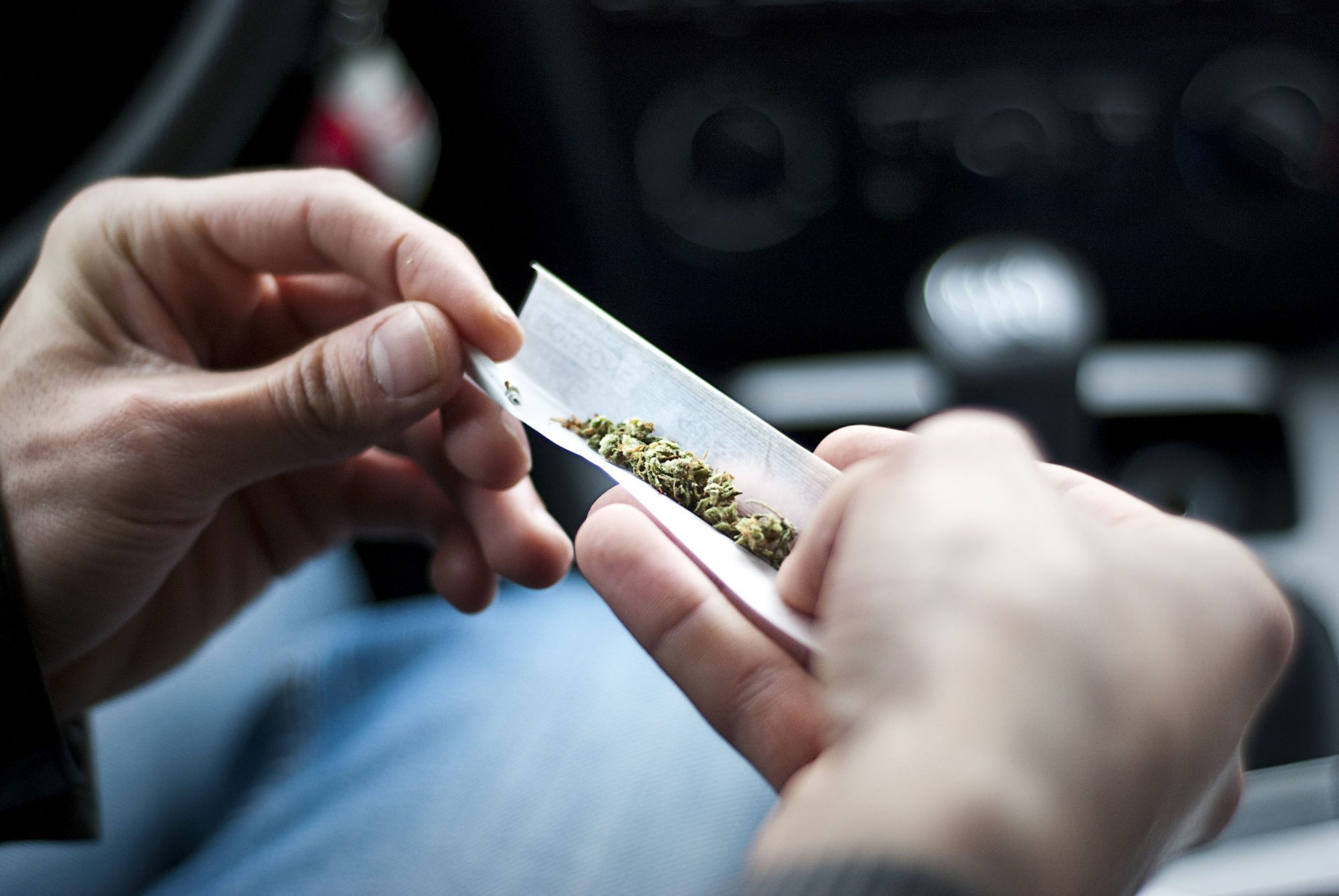With recreational marijuana use legal in eight states and 29 permitting medical pot use, there will be more drivers on the road who are potentially under the influence of marijuana. However, police have no way to determine who is dangerous and who is not, as blood levels of marijuana’s active ingredient are often meaningless. Experts discuss the problem and new scientific discoveries about marijuana impairment.
Guest Information:
- Dr. Marilyn Huestis, Professor of Toxicology, University of Maryland School of Medicine
- Dr. Tom Marcotte, Associate Professor of Psychiatry and Co-Director, Center for Medicinal Cannabis, University of California, San Diego
Links for more info:
17-03 Stoned Driving: How can police Tell?
Reed Pence: Marijuana is finding increasing acceptance all across the country. The federal government still considers cannabis a prohibited controlled substance, but 8 states have legalized its recreational use. 13 more have decriminalized it and 29 states permit medical use of marijuana. The results as you’d expect is more widespread use and more people getting behind the wheel after they have. Dr. Marilyn Huestis, professor of Toxicology at the University of Maryland school of Medicine says some drivers inevitably get in trouble.
Dr. Marilyn Huestis: We’ve known for quite a long time that cannabis is the number one illicit drug as far as prevalence in motor vehicle crash fatalities. So we’ve know that from our medical examiner system but now we know also the National Highway Traffic Safety Administration roadside survey, they found that not only was cannabis the number one drug after alcohol but that they increase in individuals who were driving with the psychoactive component of marijuana or cannabis, which is THC – Tetrahydrocannabinol, increased 48% from 2007 to 2013/14.
Reed: Huestis says that survey found more than 12% of drivers had some THC in their blood. Does that mean they were driving stoned? Huestis says, not necessarily – though not in states with zero tolerance laws, they would be considered legally under the influence. Another six states have set maximum levels of THC but they don’t agree on what those levels should be. Scientists don’t agree either.
Dr. Huestis: Everybody would love to have one number that meant, “Ok, you’re impaired,” and in reality we know that the numbers are gonna be quite different based on the individuals history of use and that we can’t say anymore, like we all believed before I did this research, my own research showed that people were negative within 6 hours and the period of impairment is probably up to 8 hours. So, it was a pretty reasonable measure but now we know differently.
Reed: Most people assume driving stoned is similar to driving drunk, where impairment follows blood levels of alcohol. But THC doesn’t work that way accord to Dr. Tom Marcotte, associate professor of Psychiatry and Co-Director of the Center for Medicinal Cannabis at the University of California, San Diego.
Dr. Tom Marcotte: Because when people smoke THC levels in the blood spike very quickly in about 5-10 minutes and then fairly rapidly drop off but because the way THC is distributed, a person can still remain high and possibly cognitively impaired for an hour or two, but that doesn’t show up in the blood. And conversely someone may be a regular smoker and have sort of a chronic low levels of THC in their blood, they may not be impaired at the time but the blood levels would indicate that they are impaired. The correlation between those two is not good.
Reed: Huestis says her research shows THC blood levels drop by 73% within a half hour of smoking and by 90% within about 1.5 hours. But when a driver is in a crash or stopped for a suspicion of driving under the influence of marijuana, U.S. police departments have no quick test to find out THC levels. Marcotte says it may be an hour or more before police can get a blood draw, which by then may have no relation to levels while driving.
Dr. Marcotte: I think it’s a noble effort to try and come up with fluid levels, but I think the majority of people who do this work consider them problematic. I’ve heard of some presentations by prosecutors where juries etc often do not take them seriously in terms of consideration because of some of the complexities, which is talked about. Which is a person can have a level above the cut off point and not be impaired and vice versa, they could be below that cut off point and still be impaired. So as an example, a study out of Washington with AAA demonstrated that if you use, I believe is 5 nanogram cut point in blood, that of all the people that these DRE’s or these Drug Recognition Experts have identified as being impaired due to cannabis while on the road, 70% of them would’ve been called not guilty or not impaired because by the time they got to the station to get their blood levels, they were below 5 nanograms.
Reed: A roadside saliva test used in Australia could change that. However, whether someones under the influence of THC or not is much more complicated than blood or saliva levels. Those may actually mean little, for example the combination of alcohol and cannabis can be much more potent than their levels might predict. What’s more, THC can stick around in the body for weeks because it’s fat-soluble. Water-soluble molecules like alcohol pass through the body relatively quickly but THC seeks out fat tissues and once there, it can be stored.
Dr. Huestis: If someone is a chronic frequent cannabis smoker, so they’re smoking daily or they may be smoking multiple times daily, what happens is that THC gets stored in all of the tissues of your body. First the ones where a lot of blood flows like your heart, your lungs, your kidney. But then eventually, it get’s into the fat and if you think about it, the brain is a very lipophilic organ – it has all the mylan sheaths for our nerves which are very fatty tissue, so we know that the THC is stored in the brain and we also have evidence that it stored in the brain, you can measure it in the brain even when it’s no longer measurable in the blood.
Reed: Huestis says the stored THC may be released into the blood at low levels for as long as a month. So if a daily users in a crash or stopped by police and then tests positive for THC, is that a result of recent intoxication or release over time?
Dr. Huestis: The concern for everyone is, you know, we never want to accuse someone inappropriately so does this show that somebody who hasn’t smoked in 12 hours or 15 hours, are they impaired or is this just drug that’s left over from previously? So, it’s a huge problem.
Reed: However, Huestis’ new research indicates that recency may not matter as much as we thought. High levels of stored THC change the brain and may have effects for weeks.
Dr. Huestis: The actual receptors in the brain that they bind to, the density of those receptors was reduced, showing that they body – when you get constant stimulation – tries to go back to a normal state and so it reduces the number of receptors that these drugs can bind to and the problem with that is that the endogenous system in our brain that the THC binds to carries out really critical functions, like memory/reproduction/body temperature/hunger/attention/motor control – all of these critical functions. So when you down-regulate their receptors density, you’re changing the way that system works in your brain and we showed that they were significantly reduced but by 30-days the brain with no stimulation/no access to drugs, had returned to normal.
Reed: However until then, Huestis has found that a chronic user might be affected whenever they get behind the wheel for as long as a month.
Dr. Huestis: When we did psycho-motor tests that show whether or not someone is going to do poorly on the road driving they were impaired, base-line, that didn’t surprise me at all; they were impaired a week later, after no drug exposure, that didn’t even surprise me too much because we know that cognitive affects last more than the 7-days; but we showed significant impairment at 2-weeks and 3-weeks after last drug use. So it can be that these individuals who have this big amount of THC stored in the brain have decreased function over that same time frame.
Reed: However the effects that have been found in heavy pot smokers weeks after stopping use aren’t the same as you’d see in someone who’s drunk. So methods of detecting who is too stoned to drive may have to be completely different as well. Marcotte’s lab at UC San Diego, is developing a computer based performance test because it’s thinking that’s muddled not physical abilities. They can touch their own nose, but their judgment suffers.
Dr. Marcotte: Unlike alcohol which has some pretty clear physiological affects, people start staggering and it’s sort of obvious to someone who’s looking at them that they may be under the influence or they may have difficulty on some of these field sobriety tests, cannabis has more of a cognitive effect than physiological. So we’re working here and also with some law enforcement agencies to see if we can develop something that more accurately measures the cognitive effects that cannabis has on things such as the ability to divide attention and time-estimation, so forth, and then relate those to performance in a driving simulator trying to close that loop between the cognitive affects, or way of assessing them, and then linking that to actual performance.
Reed: Huestis says that THC has a major affect on executive functions. Part of the decision making process that’s important in driving. She describes the true story of a young pot smoker out on the road with his friends.
Dr. Huestis: He looks down the road and he sees an old man crossing the street and just like we all do, we don’t even consciously do it, he sees the man going across the street, he looks at how fast he’s moving, he looks at how fast he’s going and he figures out in his mind, “no problem, he’s going to be across the street by the time I get there.” But the old man drops his keys, it’s hard for him to bend over and he’s struggling and he’s dropping them and he’s not able to pick them up. The young man sees it but he has to take in the sensory information, he has to go to the brain – compare it against his memory, against his thought processes, he has to the executive function means he’s gotta say, “what is the right course of action? Should I swerve to the left, should I slam on my breaks? What am I going to do to stop from hitting him?” and then send that message to his muscles to make that happen – and in this case he just ran him right over.
Reed: So how do we know when a pot smoker is too stoned to drive? The short answer is, we don’t. There are too many variables that science has yet to solve. Huestis says in general, having used marijuana roughly doubles the risk of a fatal crash. But, it’s less risky than driving with double-digit blood alcohol levels. A new study in the American Journal of Public Health shows that fatal accidents have actually declined in states where medical marijuana is legal. The authors theorize that younger drivers in particular are driving under the influence of pot rather than driving drunk. But does that make them safer? Legislators, police, and drivers themselves can’t comfortable say that any kind of measurement more than zero makes them safe or unsafe. You can find out more about all of our guests through links on our website, RadioHealthJournal.net where you can also find archives of our programs. You’ll find them on iTunes and Stitcher as well. I’m Reed Pence.
Sign up to receive email updates
Enter your name and email address below and I’ll send you periodic updates about the podcast.











Leave a Reply